
31 May TOP CONVERSATIONAL MARKETING STATISTICS IN 2023
Conversational marketing has emerged as a powerful tool in the current marketing landscape. It involves engaging customers in real-time conversation, which fosters a more personalized and authentic interaction. The growth in the usage of conversational marketing is expected to continue, with critical statistics indicating a significant increase in this area in the coming years. As such, it is essential to understand the importance of conversational marketing statistics and their implications for businesses.
One of the primary reasons conversational marketing statistics are crucial is that they offer insights into customers’ behaviour. By tracking customers’ interactions, responses, and engagements, businesses can gain an in-depth understanding of their preferences, needs, and interests. Conversational marketing statistics can provide valuable customer insights that can drive business growth.
Another essential aspect of conversational marketing statistics is that they can be used to measure the performance of marketing campaigns. By tracking metrics such as engagement rates, conversion rates, and customer satisfaction, businesses can determine the success or failure of their marketing campaigns. Essentially, conversational marketing statistics enable businesses to measure, analyze, and refine their marketing strategies for maximum impact.
Furthermore, with the rise of chatbots and advanced AI capabilities, conversational marketing statistics play an increasingly important role in automating marketing processes. By tracking chatbot interactions and responses, businesses can identify areas where the chatbots need improvement and optimize their performance.
In addition, conversational marketing statistics can accurately forecast trends and predict future customer behavior. Conversational marketing statistics provide valuable insights that can be leveraged to stay ahead of the competition and stay relevant in an increasingly fast-paced business landscape.
Below, we at Amra & Elma have compiled a list of 15 Conversational Marketing Statistics for 2023!
Conversational Marketing Statistics in 2023 (Editors Choice):
- According to 50.7% of companies, conversational marketing allows them to reply faster
- 71% of customers want organizations to connect with a conversational marketing bot
- 60% of B2B buyers prefer to speak with sales after conducting their own research
- 90% of respondents believe an immediate response is critical or extremely important
- The chatbot enterprises are predicted to reach $142 billion by 2024
Top 15 Conversational Marketing Statistics in 2023!
TOP CONVERSATIONAL MARKETING STATISTICS #1 – According to 50.7% of companies, conversational marketing allows them to reply faster
In recent years, conversational marketing has become a strategy for commercial entities to increase customer engagement, retention, and sales. However, with the abundance of data available, knowing what strategies work best can be confusing for businesses. One critical insight that has emerged is that 50.7% of companies’ conversational marketing allows them to reply faster, which is crucial in today’s digital age. (According to Drift Research Report).

TOP CONVERSATIONAL MARKETING STATISTICS #2 – 71% of customers want organizations to connect with a conversational marketing bot
According to Salesforce, 71% of customers want organizations to connect with a conversational marketing bot in actual time. Conversational marketing bots allow customers to access information and assistance quickly and easily without waiting on hold or navigating through automated menus. This can lead to higher customer appreciation and loyalty since consumers feel appreciated and their requirements are met on time.
TOP CONVERSATIONAL MARKETING STATISTICS #3 – 60% of B2B buyers prefer to speak with sales after conducting their own research
According to HubSpot, 60% of B2B buyers prefer to speak with sales after conducting their research. This statistical insight highlights an essential aspect of the modern sales process that businesses must consider and actively engage with to drive revenue growth. The increasing complexity of B2B transactions and the highly competitive nature of the marketplace have led to an evolution in the buyer journey.
TOP CONVERSATIONAL MARKETING STATISTICS #4 – When presented with gated content, 81% of tech buyers do not fill out forms
Research from LinkedIn has shed light on the fact that 81% of tech buyers do not fill out forms when presented with gated content. The findings show that tech buyers have become increasingly discerning regarding such promotional tactics, with many avoiding gated content altogether. This could be attributed to navigating through gateways, filling out forms, and providing personal information being time-consuming and laborious.

TOP CONVERSATIONAL MARKETING STATISTICS #5 – The majority of firms waste 30% of their time on low-value tasks that can be automated
According to research, the majority of firms waste 30% of their time on low-value tasks that can be automated. This significant percentage of time could be better utilized for more critical and value-adding activities. To put this into perspective, consider some of the most common low-value tasks organizations still carry out manually. Filling out forms, organizing data, and managing invoices are all tasks that can be automated with the right technology.
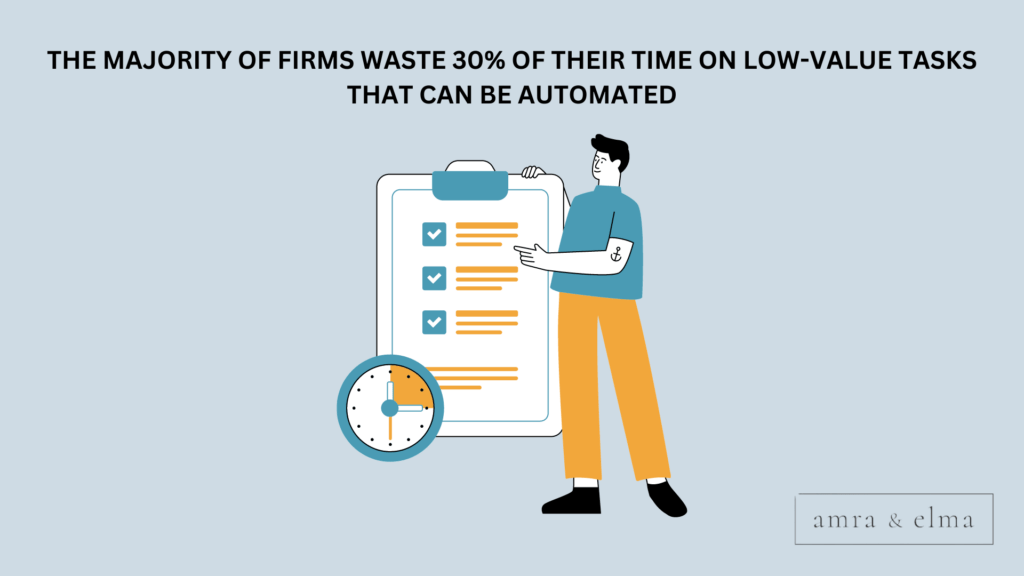
TOP CONVERSATIONAL MARKETING STATISTICS #6 – According to Hubspot Research, 90% of respondents believe an immediate response is critical or extremely important
According to the research findings, 90% of respondents have affirmed that an immediate response is extremely important. The research has shown that customers, in general, are impatient when it comes to dealing with businesses. They expect prompt attention and a quick resolution to their concerns. In today’s world, a lack of response or a prolonged wait time may lead to customer dissatisfaction and, ultimately, a lost opportunity for the business.
TOP CONVERSATIONAL MARKETING STATISTICS #7 – The estimated value of eCommerce chatbot purchases by 2023 is $112 billion
With an estimated value of $112 billion in eCommerce chatbot purchases by 2023, it is clear that these conversational agents are quickly becoming an integral part of the online shopping experience. Chatbots offer a variety of benefits that traditional e-commerce methods cannot match. They provide customers with a more natural and conversational experience and enable businesses to automate repetitive tasks, personalize customer interactions, and increase customer engagement and loyalty.
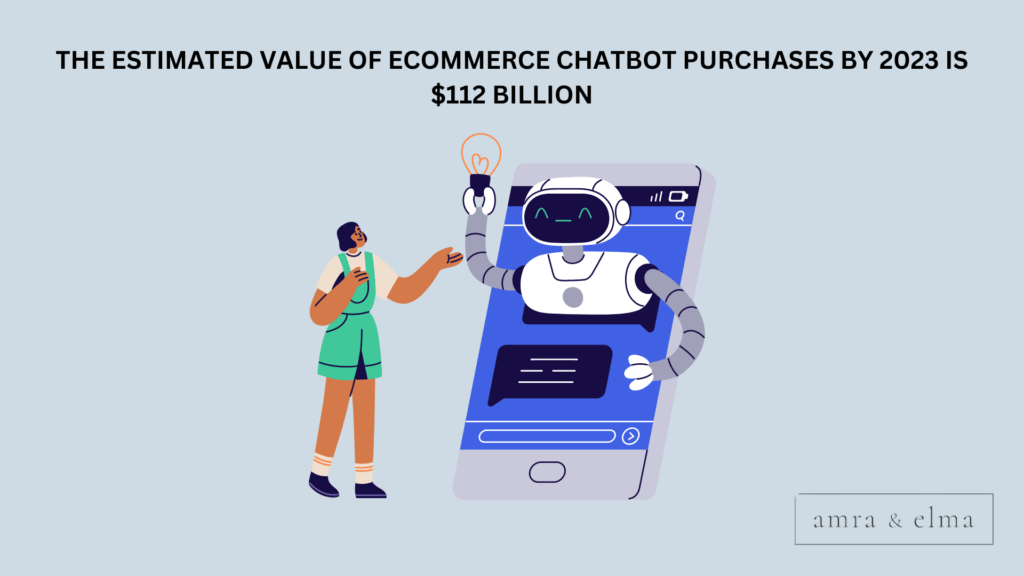
TOP CONVERSATIONAL MARKETING STATISTICS #8 – The chatbot enterprises are predicted to reach $142 billion by 2024
Chatbots have emerged as a powerful tool in the digital era. And as AI-powered chatbots such as Crisp (one of the leading Tidio alternatives) become more commonplace, their cutting-edge conversational capabilities are undoubtedly going to send shockwaves through the marketing world. According to Three Sixtee, in recent years, the chatbot industry has grown exponentially and is expected to reach a staggering $142 billion by 2024. This predicted growth is a testament to the immense potential of chatbots in streamlining business processes, enhancing customer experience, and improving overall efficiency.

TOP CONVERSATIONAL MARKETING STATISTICS #9 – Conversational marketing solutions are used by 80% of firms
Recent studies by Drift have shown that approximately 80% of firms utilize conversational marketing solutions to interact with customers and prospects. This trend indicates a growing recognition among businesses of the potential impact of conversational marketing solutions on customer engagement, retention, and satisfaction.

TOP CONVERSATIONAL MARKETING STATISTICS #10 – 21% of marketing professionals do not personalize their marketing efforts using client data
According to research conducted by Folloze, a leading marketing personalization software provider, an alarming 21% of marketing professionals do not personalize their marketing efforts using client data. This trend is particularly concerning, given the significant potential of personalized marketing to drive revenue growth, enhance brand loyalty, and improve customer satisfaction.
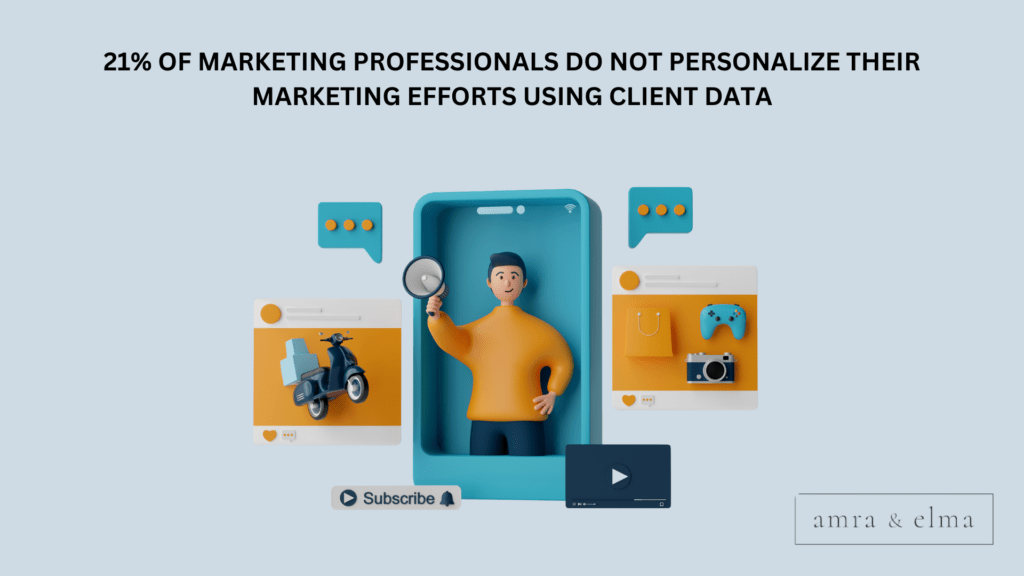
TOP CONVERSATIONAL MARKETING STATISTICS #11 – Direct messages outperform retargeting advertisements by 30%
Recent research conducted by Business Insider reveals that direct messages are more effective than retargeting ads. The study found that direct messages outperform retargeting ads by 30%.This finding provides valuable insights into the behavior and preferences of modern consumers. Many customers are now more responsive to personalized and direct messaging than generic online advertising.
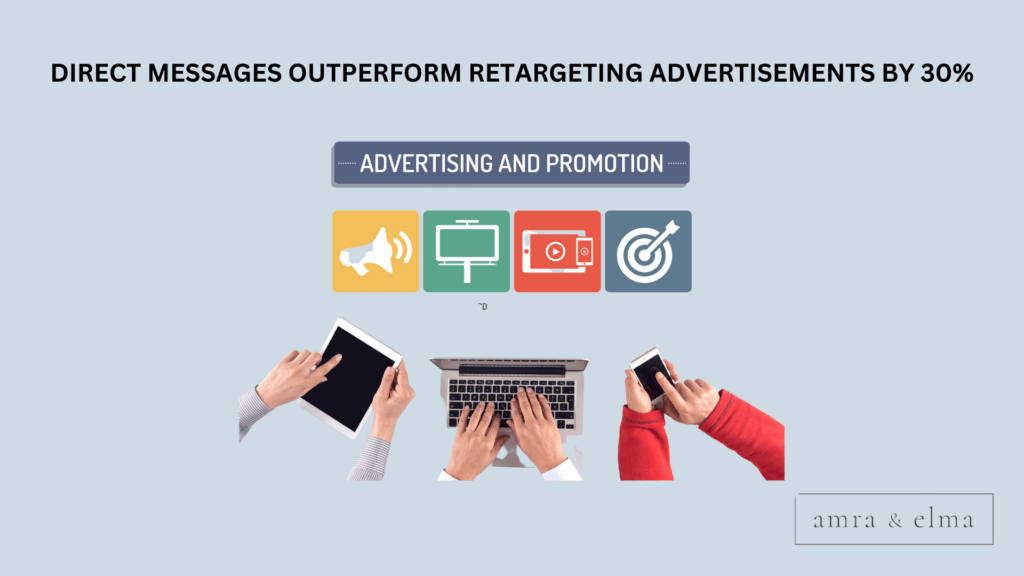
TOP CONVERSATIONAL MARKETING STATISTICS #12 – Text messages are preferred by 75% of millennials for appointments, payments, and promotions
According to an OpenMarket study, 75% of millennials prefer using text messages for these functions, citing convenience and speed as the primary reasons for their preference. It is easy to understand why millennials have wholeheartedly embraced text messaging for these critical functions. In an era where time is of the essence, and everyone is always on-the-go, text messaging enables them to handle their appointments, payments, and promotions on-the-fly and with ease.
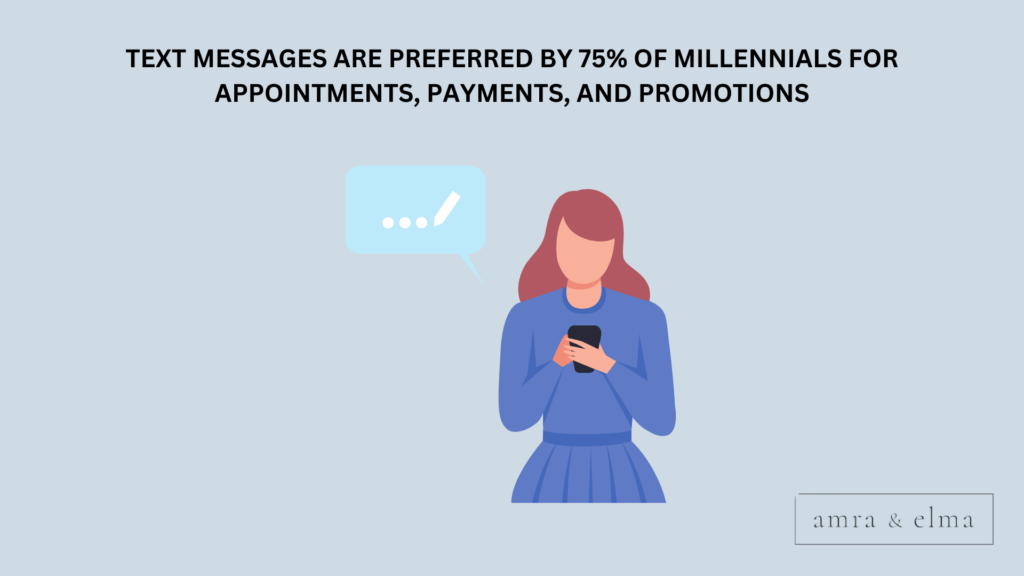
TOP CONVERSATIONAL MARKETING STATISTICS #13 – The average live conversation time is 11 minutes and 9 seconds
A study conducted by Comm100 indicates a noteworthy finding about the average live conversation time, which stands at 11 minutes and 9 seconds. This information is significant, especially considering the current digital age, where communications dominate nearly every aspect of human interactions. The study further shows how communication channels are diversifying their reach, with live conversations becoming increasingly prevalent.
TOP CONVERSATIONAL MARKETING STATISTICS #14 – 85% of customers were satisfied with their live chat experience on the platform
According to research conducted by Zendesk, a leading customer support platform, an overwhelming majority of customers – nearly 85% – have expressed their satisfaction with the live chat service provided on the platform. This staggering statistic is a testament to the effectiveness of live chat as a tool for customer engagement, communication, and problem-solving.
TOP CONVERSATIONAL MARKETING STATISTICS #15 – Approximately 29% of customers and 38% of service representatives dislike scripted live chat responses
According to Kayako studies, approximately 29% of customers and 38% of service representatives dislike scripted live chat responses. This has led to a significant shift in how companies approach their customer service strategies as more and more businesses recognize the importance of authentic and personalized customer interactions. One of the primary concerns with scripted live chat responses is the lack of genuine empathy and understanding.
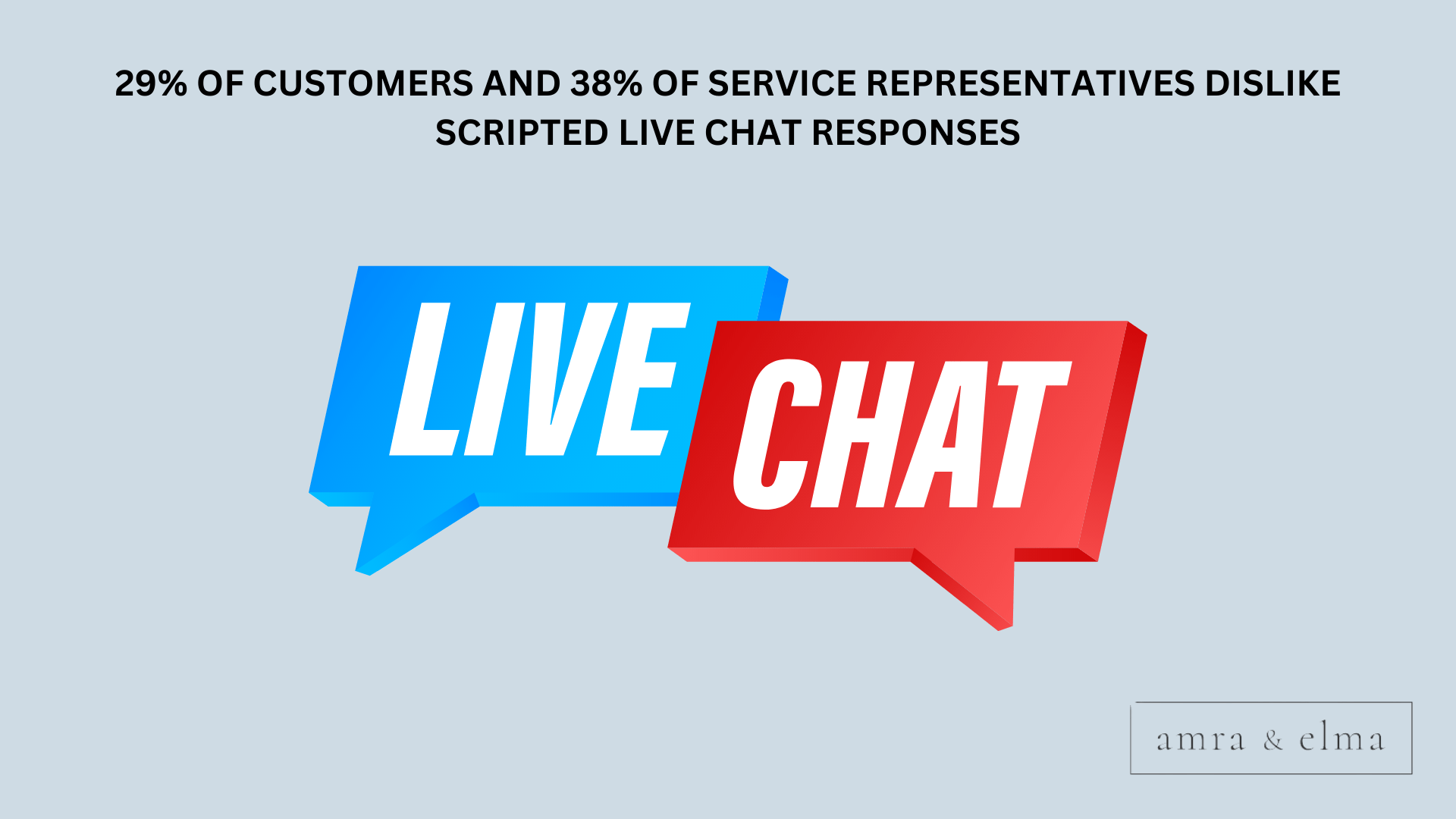
Top Conversational Marketing Statistics – In Conclusion
Conversational marketing statistics provide the necessary insights into the customers’ behavior and preferences, which is vital for businesses to strategize their marketing campaigns and improve their ROI.
One of the primary reasons conversational marketing statistics are essential is that it helps businesses better understand their customers. With the help of chatbots and natural language processing, companies can collect valuable data about their customers’ preferences, behavior, and patterns. This data can personalize marketing campaigns, improve customer engagement, and improve customer experience.
Conversational marketing statistics also provide businesses with valuable insights into the effectiveness of their marketing campaigns. For instance, companies can track the number of inquiries from chatbots and social media, conversions, and customer retention rates. This information can help enterprises to understand what it is about their marketing campaigns that are working well and what they can improve upon.
Another significant advantage of conversational marketing statistics is that it can help businesses save time and money. By implementing chatbots and automating conversations, businesses can reduce the need for manual support, which is cost-effective and more efficient. Additionally, with the help of data analytics and insights, businesses can make informed decisions quickly and make the necessary adjustments to their marketing campaigns.
In conclusion, the importance of conversational marketing statistics must be considered. It provides businesses with valuable insights into customer behaviors, preferences, and patterns, which can improve customer experience, provide personalized marketing campaigns, and improve ROI. As technology evolves, the adoption of conversational marketing solutions will continue to increase, making it a crucial tool for businesses to stay competitive in today’s digital age.
TOP CONVERSATIONAL MARKETING STATISTICS IN 2023 – FAQ:
What are the key benefits of Conversational Marketing?
As we edge closer towards 2023, conversational marketing is becoming an ever more important aspect of modern-day marketing. Unlike traditional marketing practices, conversational marketing is a two-way conversation between businesses and consumers that facilitates personalized interactions and builds stronger relationships. By utilizing chatbots, messaging apps, and other conversational tools, companies can leverage conversational marketing to meet their target consumers where they are and offer them personalized solutions.
In light of all this, it is worth examining the key benefits of conversational marketing, which are, in essence, what makes it a vital tool for businesses. The first and most glaring benefit of conversational marketing is that it enables businesses to engage with their consumers more personally. Conversational marketing bridges the gap between businesses and their consumers by providing an avenue through which consumers can interact with businesses and receive timely and relevant information. This marketing approach also significantly improves customer experience, which, in turn, boosts customer loyalty.
Another benefit of conversational marketing is that it allows businesses to gather valuable customer data. Conversational marketing tools like chatbots and messaging tools can provide businesses with a wealth of helpful information, including consumer preferences, purchase history, and other essential data points. Companies can use this information to tailor their marketing strategies to serve their customers better and ultimately increase sales.
Moreover, conversational marketing is a cost-effective tool for businesses. With the rise of automation technology in recent years, conversational marketing has become a more accessible tool for businesses of all sizes. By leveraging chatbots and other messaging tools like Facebook Messenger, businesses can reduce the time and effort required for customer interactions that would otherwise require human agents. This way, companies can save on labor costs and redirect resources towards other critical areas of their operations.
In conclusion, Conversational marketing is quickly emerging as an essential aspect of modern-day marketing, providing myriad benefits for businesses. The increased personalization, improved customer experience, a gathering of valuable customer data, and cost-effectiveness of conversational marketing are all factors that make it a vital tool for businesses seeking to thrive in the competitive marketing landscape of 2023. As such, businesses must embrace conversational marketing and incorporate it into their strategies to stay ahead of the competition.
Why Are Conversational Marketing Statistics so popular?
Conversational marketing is a marketing approach that involves personalized and one-to-one conversations between businesses and customers. This type of marketing has become increasingly popular in recent years thanks to its ability to create meaningful and engaging connections with customers, driving sales and increasing customer loyalty. However, what has made conversational marketing even more powerful is the use of conversational marketing statistics.
Conversational marketing statistics are data sets that track the performance and effectiveness of conversational marketing campaigns. These statistics give businesses insights into how well their campaigns perform, what type of conversations resonate with their target audience, and where they should focus their efforts to optimize their marketing strategies.
One reason conversational marketing statistics are so popular is that they can help businesses engage with customers more personally and meaningfully. By using conversational marketing techniques such as chatbots, live chat, and messaging apps, businesses can get to know their customers on a deeper level, understand their needs and preferences, and provide tailored recommendations and solutions.
Another reason why conversational marketing statistics are so popular is that they provide businesses with a wealth of data that can be used to optimize their marketing strategies. For example, companies can track the success of individual messaging campaigns, analyze customer feedback and behavior patterns, and segment their audience to improve targeting and engagement. This level of data-driven insights allows businesses to make more informed decisions and adapt their marketing strategies to better meet the needs of their customers.
Furthermore, conversational marketing statistics have become more popular because customers expect a more personalized and immediate experience when interacting with businesses. They want fast and easy access to information, and conversational marketing provides just that. Companies incorporating conversational marketing techniques have seen significant improvements in customer satisfaction, response times, and sales.
In conclusion, conversational marketing statistics are popular because they provide businesses with valuable insight into their customers’ needs and behaviors, enable better decision-making, and ultimately increase customer satisfaction, retention, and sales. With the proliferation of messaging apps, live chat, and chatbots, conversational marketing is only set to grow in popularity, making it essential for businesses to stay up-to-date on the latest conversational marketing statistics and trends.
How extensively are Conversational Marketing Statistics being used?
Conversational marketing has been revolutionizing the way businesses interact with their customers. In a world where customers demand personalized experiences, conversational marketing has enabled companies to deliver that at scale. However, to truly understand the impact of conversational marketing, businesses need to get acquainted with conversational marketing statistics.
Conversational marketing statistics are becoming increasingly important in providing insights into the effectiveness of conversational marketing. With the rise of conversational marketing, businesses are seeking to understand the value of investing in conversational marketing strategies. Conversational marketing statistics give businesses data-driven insights into the effectiveness of their conversational marketing efforts.
One area where conversational marketing statistics are being used extensively is in measuring customer engagement. Conversational marketing enables businesses to create highly personalized and engaging experiences that drive customer engagement. Conversational marketing statistics provide insights into customer engagement across various touchpoints.
Another area where conversational marketing statistics are being used extensively is in measuring customer satisfaction. Conversational marketing enables businesses to offer personalized experiences that customers find valuable. Conversational marketing statistics provide insights into customer satisfaction across various touchpoints.
Conversational marketing statistics are also being used to measure the ROI of conversational marketing. Businesses need to understand the value of their investment in conversational marketing. Conversational marketing statistics provide insights into conversion rates, customer acquisition costs, and revenue generated from conversational marketing efforts.
Moreover, conversational marketing statistics are being used to optimize conversational marketing strategies. Businesses can adjust their conversational marketing strategies by analyzing conversational marketing statistics to improve customer engagement, satisfaction, and ROI.

